1."Tu hao" (tu hao).
"Tu hao" (tu hao) was the most popular pattern during the Song dynasty.
The pattern of "tu hao" tea bowls consists of uniform and fine thread-like veins that penetrate through the black glaze layer, resembling the hairs on a rabbit's fur, hence the name.
The pattern of "tu hao" tea bowls varies in thickness, length, and curvature, with colors such as gold, silver, and brown. The distribution of the pattern can also vary in terms of density and coverage area.
Generally speaking, tea bowls with silver/silver-blue "zhe gu" patterns and clear distribution are considered the best. If there are colored "cai hao" patterns, it is even better, but they are more difficult to fire.
In modern times, electric firing is the main method used, and the most popular pattern now is the "you di" pattern.
"Chai shao" "tu hao" and electric-fired "tu hao" patterns have different styles.
The electric-fired "tu hao" pattern has clear boundaries, a strong sense of volume, powerful and straight lines, and a symmetrical pattern.
The main feature of "chai shao" is its charm. During the firing process, the ash from the kiln creates a rustic and ancient effect.
The crystals inside the tea bowl are three-dimensional, and the pattern has two colors, but it does not feel abrupt. Instead, it gives a very rustic and ancient feeling.
The pattern on the outside of the tea bowl is not as clear, but rather faintly visible. This is the characteristic of "chai shao" , and every tea bowl from the same kiln is unique.
The bottom inscription "Jian" is Sun Jianxing's dedicated inscription, which serves as a certificate of authenticity.
- "You di" or "zhe gu" .
"You di" tea bowls were precious items during the Song dynasty and are now widely popular in modern times.
Unlike the "tu hao" pattern, the "you di" pattern resembles boiling oil droplets and is distributed in a dotted pattern, which was traditionally called "zhe gu" However, there are now clear differences between "zhe gu" and "you di".
The firing requirements for the "you di" pattern are more stringent than those for the "tu hao" pattern. If the temperature is too low, it is not easy to form the dotted pattern, while if the temperature is too high or the reaction is too intense, the pattern is easily stretched out.
When observing the "you di"pattern, in addition to the clarity, distribution, and condition of the pattern, there is an additional feature compared to the "tu hao" pattern: a mirror-like finish.
The "tu hao" pattern consists of strip-like veins that mostly exhibit a slow reflection and rarely show a mirror-like reflection. In contrast, the "you di" pattern has enough area to exhibit a mirror-like reflection.
Generally speaking, it is best for the pattern to have a silver luster (with silver-blue being even better), with an oval distribution and a strong mirror-like finish. The overall effect of the pattern should include a sense of three-dimensionality, uniform distribution, appropriate density, and clear boundaries.
The pattern should have a silver luster, uniform distribution, strong sense of three-dimensionality, and clear boundaries.
The overall effect is very harmonious and aesthetically pleasing, with good vitrification. Moreover, zhan made by Zhuo Lao are easy to bring out their brilliance over time.
The bottom inscription "Qi" is Zhuo Lao's exclusive inscription.
- "Yao bian"
The ancient Japanese book "Kuntaikan Sayucho Ki" recorded:
"'Yao bian' is the supreme masterpiece of Tenmoku tea bowls, and it is a rare item in the world. It has a black ground with small and thin star-shaped spots, surrounded by a jade-white halo, as beautiful as woven brocade, comparable to ten thousand pieces of such fabric."
The characteristics of "yao bian" Tenmoku tea bowls are also the standards for selecting them:
- Two main distinctive features.
- Iron-clay body and high firing temperature.
- Natural mineral glaze, single glazing, and single firing.
- Three exclusive characteristics.
- "Di" : The shape of the spots is mostly round, clustered together in groups, and the surface inside the spots is flat.
- "Cai" : With changes in the angle of light, a halo will form around the "di" of the "yao bian" Tenmoku tea bowl, which will change in response to the light.
- "Hao" : "Yao bian" Tenmoku tea bowls should have "cai hao" inside.
Therefore, "yao bian" is a finished product based on the "tu hao" and "you di" tea bowls. Only by firing "tu hao" and "you di" can "yao bian" be produced.
The picture shows the "yao bian" tea bowl with a small "shu kou" made by the first person known for "yao bian," Lu Jixi. The pattern is clustered together in groups and changes with the angle of light. With "di" and "hao" and a well-proportioned shape, it forms an outstanding tea bowl.
The bottom inscription "Hui weng" is Zhu Xi's later title, and Lu Jixi's bottom inscriptions are all related to Zhu Xi.
The side inscription "Xi" is the personal mark of Lu Jixi, and some of his side inscriptions are marked with "Yi Liu" .
The detailed image shows that there is a halo outside of the nucleus, and the pattern inside is black; it is opposite to the normal pattern. Outside of the nucleus, you can see stripes similar to rabbit hair.
- Wujin

Wujin glaze refers to a pure black glaze. Generally, it is pure black glaze, with a few rare ones having some rabbit fur, and some have fewer patterns or are extremely difficult to observe directly. These bowls that do not meet the standards of rabbit fur are also classified as Wujin glaze bowls.
The Chai-shao Wujin tea bowl is covered with speckles both inside and outside, just like the beautiful Milky Way in the night sky.
The seal on the bottom reads "Xigutang," which is a kiln that specializes in making Tenmoku. On the side, there is the mark "Chai," which signifies that it was fired using the Chai-shao (firewood) method.
- Miscellaneous color glaze.
In the natural glaze category, those that cannot be classified as rabbit fur, oil droplets (partridge feather), ge-type, or wujin, can be placed in the miscellaneous color glaze category. Miscellaneous does not mean easy to fire, nor does it mean low-grade or cheap. It is just not easy to classify, hence the name miscellaneous.
Shihong, as the name suggests, is a glaze color that is as red as a ripe persimmon, and is a fine product of the miscellaneous color glaze category.
The raw materials and formulas for Shihong glaze are the same as those for rabbit fur glaze. However, due to differences in the placement of the bowls in the kiln or other reasons, when the temperature is too high or the atmosphere is more oxidizing, Shihong glaze can be formed.
The picture shows the Shihong tea bowl made by Sun Li, a judge for the intermediate craftsman title in Tenmoku.
The vibrant red color is extremely festive.
The glaze color is not monotonous but rather diverse.
In addition to the red, there are also subtle patterns, resembling clouds.
The red patterns decorate the bowl, giving it a sense of depth and meaning.
The seal on the bottom reads "Sun Li," which is Sun Li's own name used as a seal.
The detailed image allows us to clearly see the patterns, which are very beautiful.
There are many varieties of miscellaneous color glazes, and today we introduced this one. We will share others with you next time.
Rabbit fur, oil droplets, and ge-type glazes are very classic, having withstood the test of time over thousands of years.
As for which glaze color one is more obsessed with, it depends on personal taste.
If you like it at first sight and still like it after looking at it many times, then it is the glaze color that suits your aesthetic preferences.


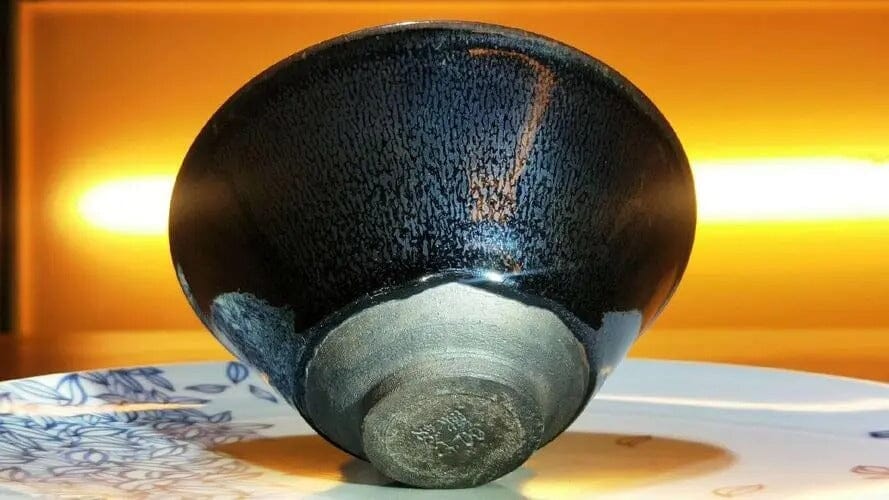
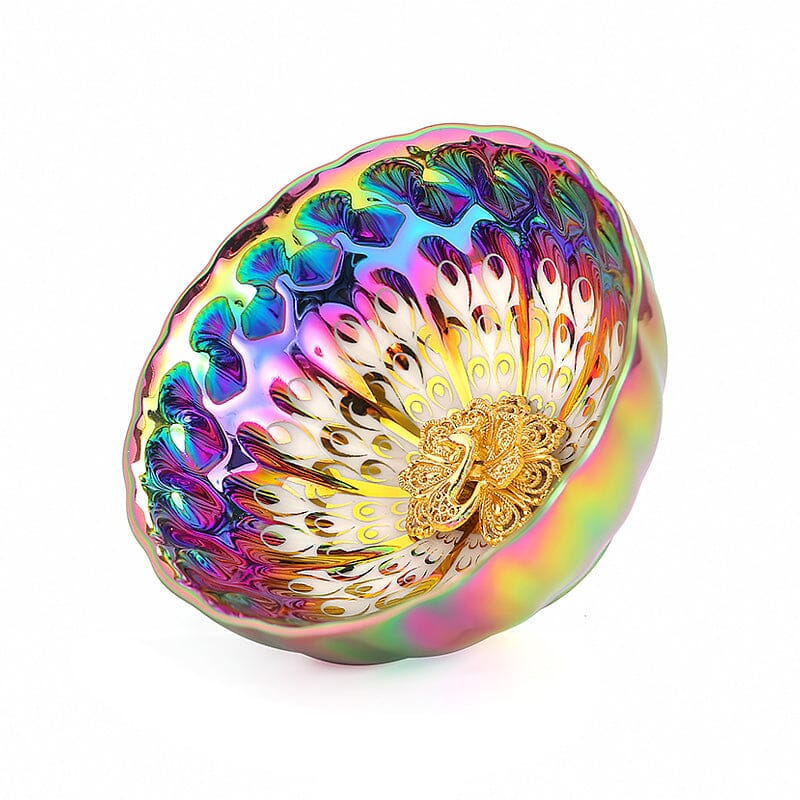
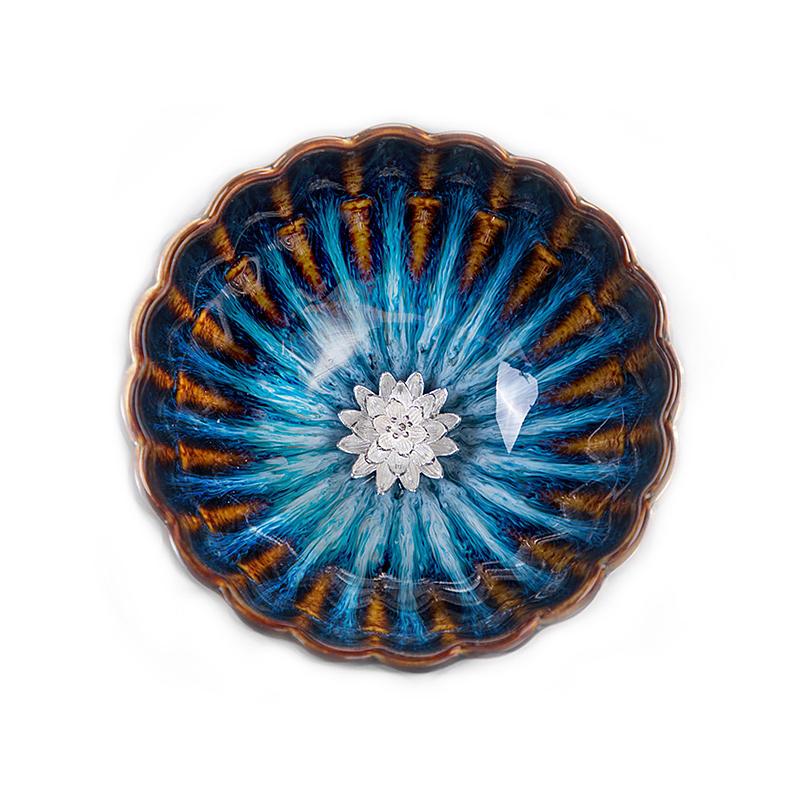
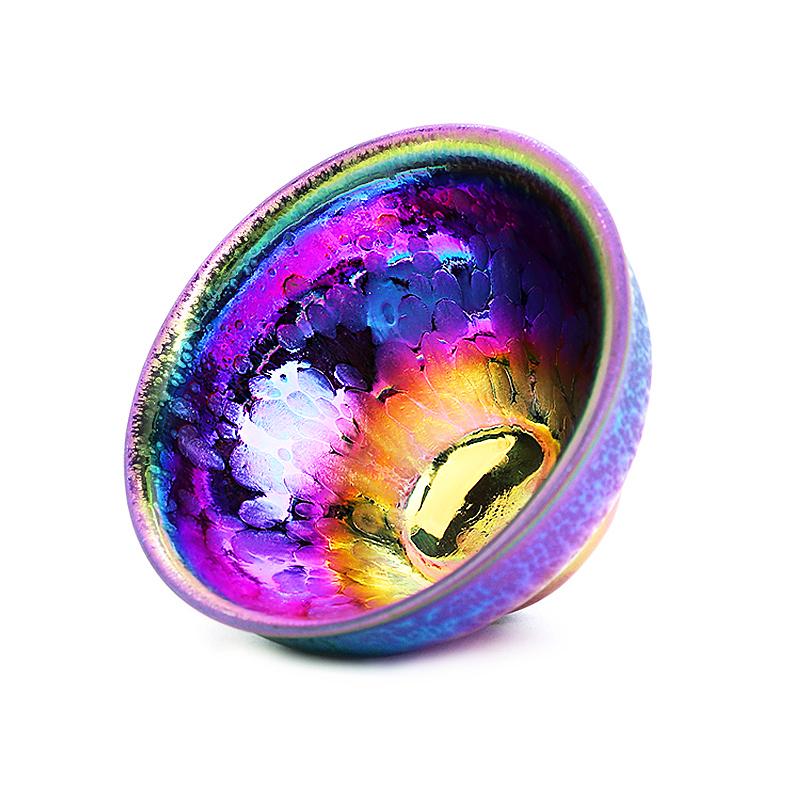
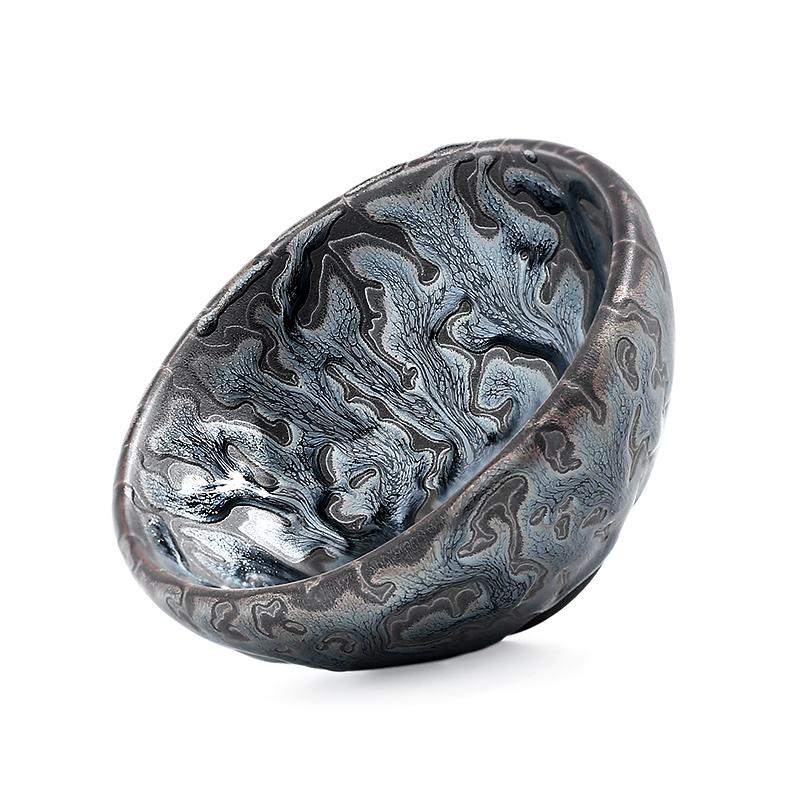
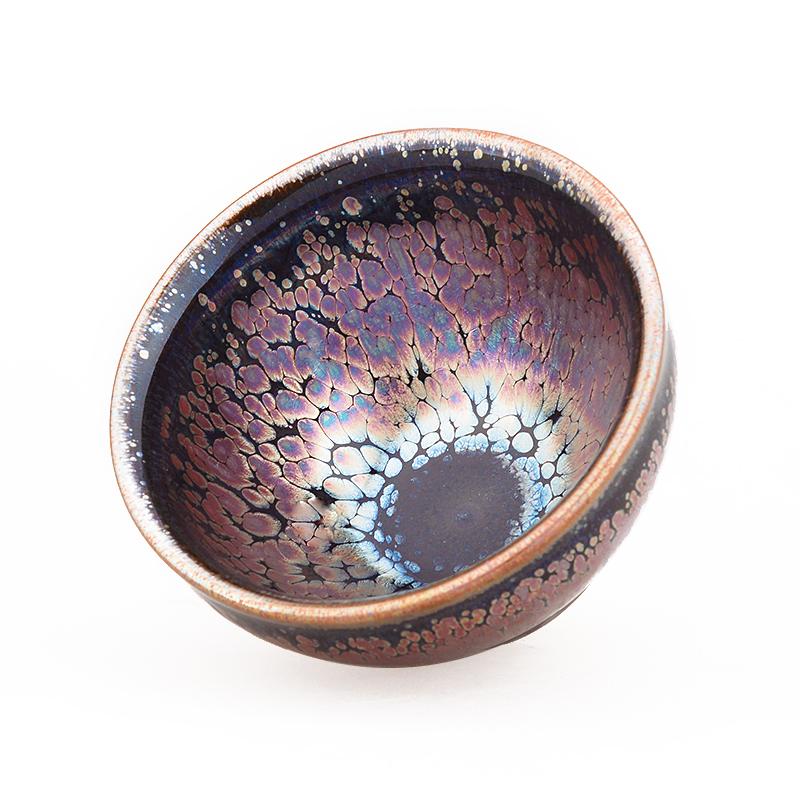
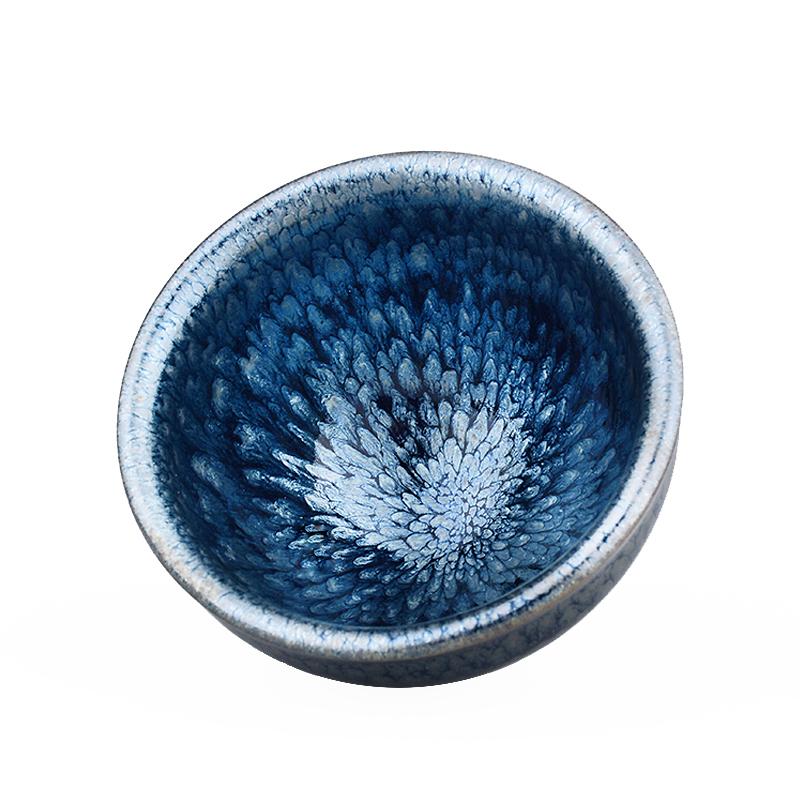
Share:
Is Tenmoku "toxic"? Then why are more and more people using it to drink tea?
How much is a Yao Bian Tenmoku worth?